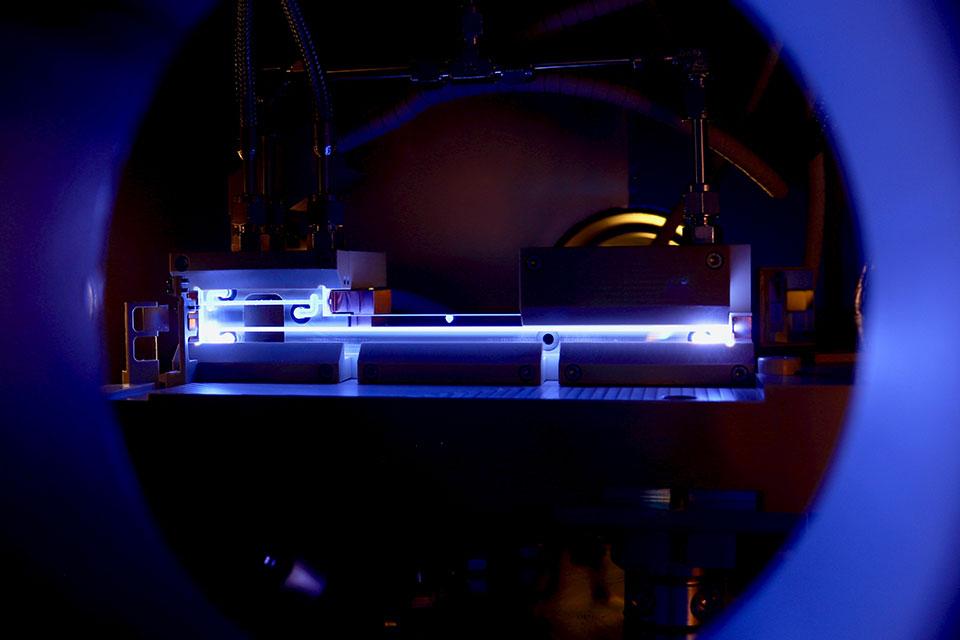Professor Brian Foster, Donald H Perkins Professor of Experimental Physics, comments on the findings published in Nature today, 2 March 2022, from DESY’s FLASHForward experiment. The results show how basic plasma-physics processes limit the repetition rate of accelerators based on plasma-wakefield acceleration; Professor Foster was one of the founders of FLASHForward in 2013.
Ever since the Higgs Boson, responsible for giving mass to all the other elementary particles of nature, was discovered at the Large Hadron Collider (LHC) in 2012, particle physicists have dreamed of a ‘Higgs factory’ that could explore its properties in exquisite detail. Although the LHC can, and has, measured many of the characteristics of the Higgs, some can only be measured precisely in the much cleaner environment of electron-positron collisions. Several projects – linear colliders such as the ILC or CLIC, or circular colliders such as FCCee or CEPC –, have been proposed and hopefully one at least will be built in the near future. Their gestation period is however very long, partially because of their technical difficulty but mostly because of the large cost. Any technique that promises to reduce that cost is therefore very welcome – enter plasma-wakefield acceleration.
Disruptive technology
Plasma-wakefield acceleration (PWFA) exploits the enormous electric fields experienced at atomic scales by exciting coherent interactions in a gas of quasi-free electrons, otherwise known as a plasma. In principle, such fields can attain values several orders of magnitude greater than attainable with even the most sophisticated and performant metallic accelerating cavities, whose surfaces at some point will breakdown as the electric-field gradient increases. The much higher gradients of PWFA could either greatly reduce the size and therefore the cost of energy-frontier particle accelerators, and/or attain much higher energies for the same cost. The prospect of the miniaturisation of accelerators has many applications across a broad swathe of science well beyond particle physics – it would be truly disruptive technology.
We are still decades away from a linear collider that could be used in particle physics but we are already beginning to map out the broad outlines of how such a machine could be constructed. Of crucial importance for particle physics applications is ‘luminosity’ – basically the rate of electrons and positrons that can be brought closely enough together to annihilate. One crucial factor in determining luminosity is the repetition rate of an accelerator – in this case the number of bunches of electrons or positrons that can be reproducibly accelerated per second. One way to determine this for PWFA is to measure how quickly a plasma returns to its original state after such a bunch of particles has passed through it. One of the major goals for the FLASHForward beamline at DESY in Hamburg, Germany is to measure this parameter.
Exquisite timing and control
Many colleagues in the John Adams Institute for Accelerator Science in Oxford have been collaborators in aspects of the FLASHForward programme. My own involvement goes back to my time on leave of absence as Alexander von Humboldt Professor at the University of Hamburg and DESY. This professorship is the most valuable science award in Germany and I was able to devote the lion’s share of the funding to the design, construction and commissioning of FLASHForward, in collaboration with the project leader, Jens Osterhoff and subsequently with his successor, Richard D’Arcy, both of DESY. The FLASHForward beamline takes bunches parasitically from the superconducting FLASH free-electron laser (FEL) that produces photons in the water-window for use in many branches of science. The FLASH FEL has exquisite timing and control of its beam properties, which makes it ideal for experimentation at FLASHForward.
An initial bunch passes through the cell containing a plasma that is formed by a strong electrical discharge. The passage of this bunch perturbs the plasma. This is followed by a second bunch, which is split into two: the first produces the wakefield and the second is accelerated by it. By comparing the properties of this second accelerated bunch with and without the initial perturbing bunch, the state of the disturbed plasma can be deduced. The excellent timing properties of FLASH allow the gap between the initial perturbing bunch and the following two bunches to be varied in steps of 770 psecs, allowing the gradual recovery of the plasma to be mapped out with high precision. The results of the experiment are that the plasma has returned to its original state about 70 nsecs after the passage of the initial perturbing bunch.
Exciting applications
This result shows for the first time that the basic plasma processes limit the maximum repetition rate of a beam-driven PWFA accelerator to around 14 MHz. Of course, this is an upper limit – other ‘engineering’ effects, for example the extraction of the heat produced as the plasma electrons exchange their energy with the wall of the plasma cell, may well produce a more stringent limit in practice. Investigations of such effects will be subjects of future study at FLASHForward. Nevertheless, the present result for the first time sets a limit on a fundamental parameter that will determine the utility of this new method of acceleration for many exciting applications.
Recovery time of a plasma-wakefield accelerator, R D'Arcy et al, Nature, 2 March 2022

